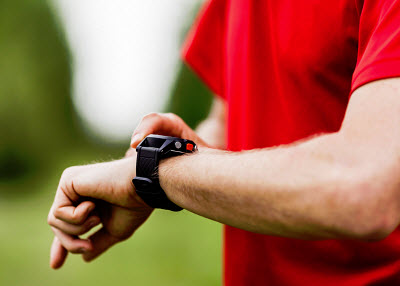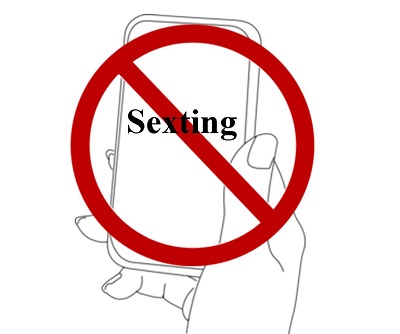A growing number of teams are finding that wearables are also helping to reduce the risk of injury.
Only three years ago, before wearable technology was as commonplace in the form of fitness trackers, it wasn’t uncommon for teams to use large, complex machinery to attempt to understand an athlete’s movements and habits in order to prevent injury and boost performance.
This was the case at the University of Toronto, where the varsity team had been using “what looked like a lab tool.”
This, according to engineer Rami Nabel, who was a student at the time and was weight training when he saw the tracking equipment used to try to track and analyze the performance of the varsity team. Nabel explained that the device that was used “was really intricate. There was a tripod, a display screen and a big box on the ground, with lots of wires everywhere.” Nowadays, though, wearable technology is accomplishing many of the same goals as that lab-style equipment, but in a much simpler way and at a much lower cost.
Nabel is now the founder and CEO of a fitness tracking wearable technology company called Push Inc.
 Push is enabled by smartphones and is based on an armband that the athlete wears in order to be able to track and analyze various different factors throughout strength training. The device s currently being used by more than 25 professional teams around the globe and, according to Nabel, “we’re growing in the college and amateur market as well.”
Push is enabled by smartphones and is based on an armband that the athlete wears in order to be able to track and analyze various different factors throughout strength training. The device s currently being used by more than 25 professional teams around the globe and, according to Nabel, “we’re growing in the college and amateur market as well.”
This plays into a rapidly growing trend that is using wearables to help to measure performance, and the companies that are grabbing hold of a part of this trend are finding that they can make a place for themselves relatively quickly at the moment, simply because the market has yet to reach its saturation point.
According to the Canadian City of Hamilton’s business development manager, Norm Schleehanhn, “We see performance analytics as an area ripe for growth.” In July, that city announced that the surrounding area would be focusing on this field in order to become a center of excellence within performance and wearable technology. “Tech companies can take advantage of our excellent sports facilities, world-renowned health networks and post-secondary institutions to create useful partnerships.”
The decision is due to the laws in North Carolina with regards to the illegality of sexting between minors.
A North Carolina judge has now ruled that it is a crime for two consenting teens to take part in sexting one another, in a case that resulted in an adolescent’s ban from using mobile phones during a full year of probation.
The individual in question is a 17 year old in high school who plays football and was caught up in a legal disaster.
The North Carolina teen found himself caught up in a legal battle that started with allegations (not against him) of the statutory rape of a local girl who was 14 years old at the time. This accusation brought about a widespread sweep of mobile phones that was conducted by the Sheriff’s department. It was during that sweep that the 17 year old high school student had his smartphone checked by the police.
At that the time when the mobile phones were being checked as a part of the legal sweep, the boy was 16 years old.
 He attended Douglas Byrd High School in the state and at the time, his girlfriend sent him a sexy picture of herself. He replied with his own similarly themed picture, as a common response from a teen boy whose girlfriend was showing sexual interest in him. Neither the boy nor his girlfriend shared any of the sexting photos with any other person – which is rare and was quote a positive element of this otherwise unpleasant case.
He attended Douglas Byrd High School in the state and at the time, his girlfriend sent him a sexy picture of herself. He replied with his own similarly themed picture, as a common response from a teen boy whose girlfriend was showing sexual interest in him. Neither the boy nor his girlfriend shared any of the sexting photos with any other person – which is rare and was quote a positive element of this otherwise unpleasant case.
Unfortunately, when the police checked the boy’s phone as they investigated the separate statutory rape case – in which he was not a suspect and is still not believed to have been involved – they discovered the various sexting photos. This brought about five charges of felony against the boy. Four were for having sexually exploited himself, a minor, and one was for having a picture of his girlfriend, who was also a minor.
Due to a quirky part of North Carolina law, despite the fact that anyone under the age of 18 can be considered a minor when they are a victim of a crime, when they are 16 or 17 they can be charged as an adult when they are the ones committing the crime. Therefore, because the boy was 16 years old, he was actually an adult using mobile phones to commit crimes against himself as a minor. This, despite the fact that the accused and the victim were the same person.
 Push is enabled by smartphones and is based on an armband that the athlete wears in order to be able to track and analyze various different factors throughout strength training. The device s currently being used by more than 25 professional teams around the globe and, according to Nabel, “we’re growing in the college and amateur market as well.”
Push is enabled by smartphones and is based on an armband that the athlete wears in order to be able to track and analyze various different factors throughout strength training. The device s currently being used by more than 25 professional teams around the globe and, according to Nabel, “we’re growing in the college and amateur market as well.”
 He attended Douglas Byrd High School in the state and at the time, his girlfriend sent him a sexy picture of herself. He replied with his own similarly themed picture, as a common response from a teen boy whose girlfriend was showing sexual interest in him. Neither the boy nor his girlfriend shared any of the sexting photos with any other person – which is rare and was quote a positive element of this otherwise unpleasant case.
He attended Douglas Byrd High School in the state and at the time, his girlfriend sent him a sexy picture of herself. He replied with his own similarly themed picture, as a common response from a teen boy whose girlfriend was showing sexual interest in him. Neither the boy nor his girlfriend shared any of the sexting photos with any other person – which is rare and was quote a positive element of this otherwise unpleasant case.